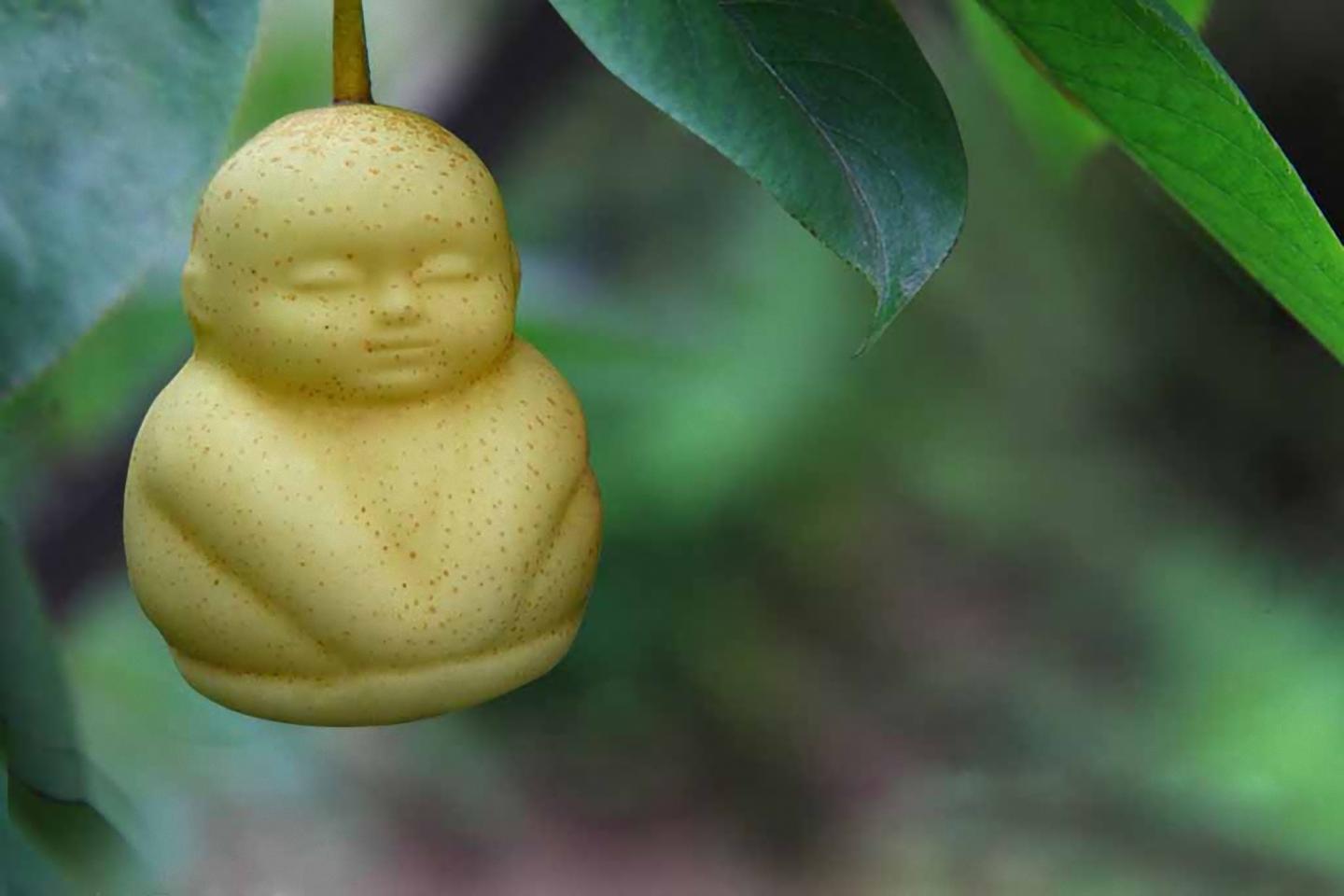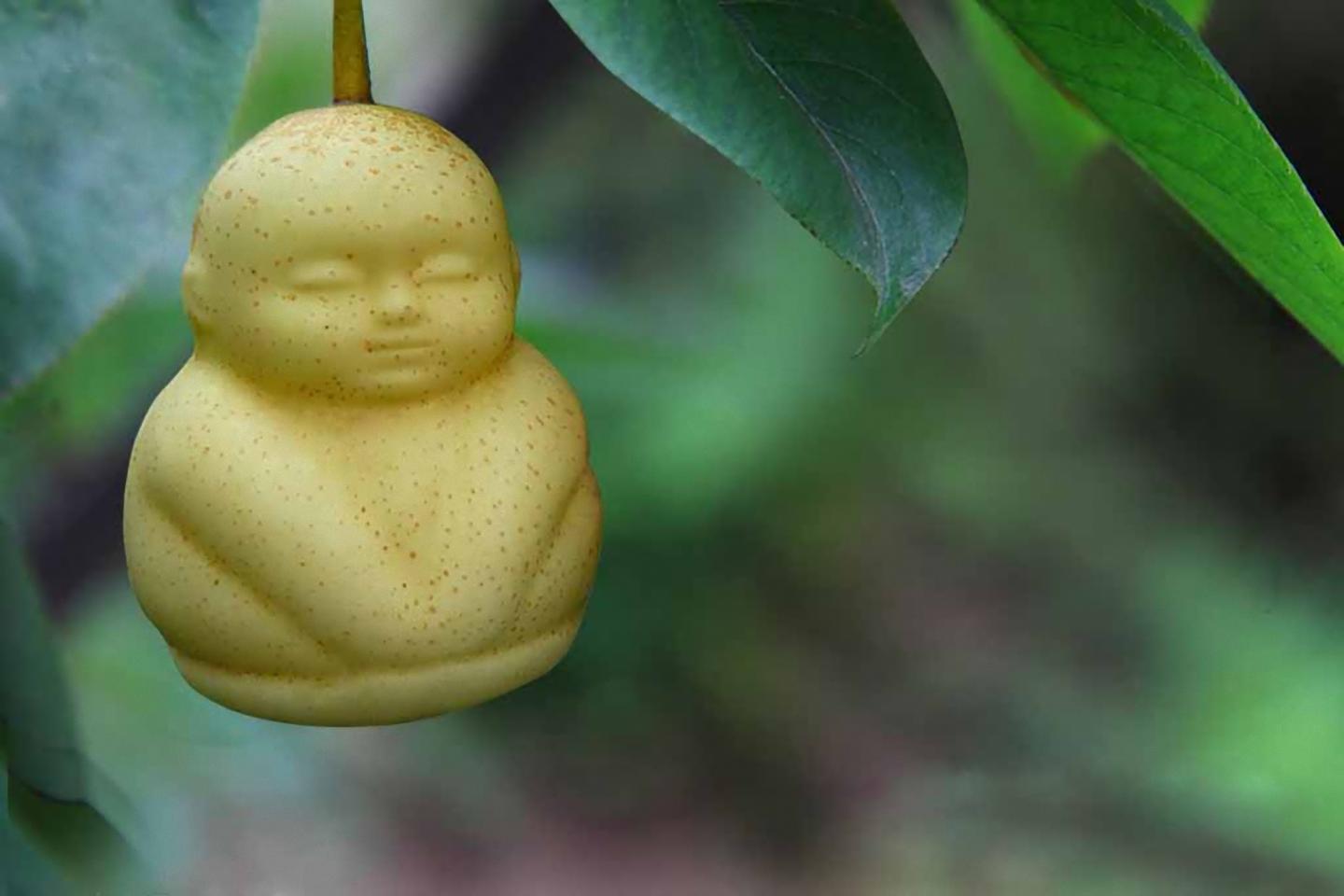
Credit: Fruit Mould
URBANA, Ill. – Square watermelons, star- and heart-shaped cucumbers, and even Buddha-shaped pears can be found in some grocery store produce bins. Who buys them? And why? A recent University of Illinois study found younger consumers with an eye for adventure are more likely to purchase these avant-garde fruits.
First of all, growing a pear shaped like a Buddha is not an easy task. There is a lot of physical labor involved. A clear plastic mold must be placed over each new pear fruit as it begins to grow, then removed when the fruit is large enough to fill the mold. The harvest time is critical for shipping. It's no wonder they retail for $8 to $9 per piece.
"Before we started researching this, we had no idea that there were so many different novelty-shaped fruits and vegetables on the market," says U of I agricultural communications professor Lulu Rodriguez who led the study. "We were curious. How do growers find buyers for such unique food products?"
Rodriguez says she and her team started with the theory of reasoned action to help explain why people might purchase something like this. The theory is based on the assumption that human beings usually behave in a sensible manner. Their intention to perform an action, the theory says, is influenced by their attitude toward the behavior and their subjective norms, particularly whether they sense that those who are important to them agree with and support that action.
"At first glance, buying a Buddha-shaped pear seems like an irrational purchase. So we thought, there must be a hedonic, consumer motivation for wanting to own such an unusual item–that is, just for the sheer pleasure of owning it. The undergrads we talked to said at $8 a piece, they'd buy one Buddha pear, take a picture of themselves holding it, and post it on Facebook. It was something to brag about," she says. "They're obviously not purchasing the pear for its nutrition. So we included a novelty-seeking component by adding a few questions to the survey and then correlating the answers to see a path of influence."
For the study, 336 people participated. Respondents first read a news article about the novel pears, then completed a questionnaire that included questions about their attitudes toward the pears, what they think their friends and family think about the idea of buying these products, their novelty-seeking tendencies, whether or not they would buy them, and how much they'd pay for them. The survey also collected demographic information–including gender, age, nationality, education level, religious affiliation, and household income.
The results show that younger consumers with lower incomes are more inclined to purchase the uniquely shaped pears, not older consumers who may have more disposable income to splurge on them.
"That was surprising," Rodriguez says. "I thought people with higher incomes and more to spare would be more likely to buy a box of the pears to impress a friend or business associate. But we think younger people see them as something adventurous. Older people may just think the pears are foolish.
"Our findings do suggest that marketers can target people who like adventure and seek new experiences by making every effort to reduce boredom, and avant-garde fruit shapes are likely to fill the bill," Rodriguez says. "Those who sell the regular fruits might try making simple changes that can create a new mood to entice the novelty seekers."
Rodriguez says the novelty-shaped pears are grown in China in an orchard that is no different than any other, and it's likely only a small portion of the trees are relegated to growing the novelty-shaped fruit. The unconventional shapes mean big profit for the growers–about 1,000 percent greater return for their investment and labor.
"I doubt that American farmers would try this as a value-added product. It's just so funky," Rodriquez says. "It caters to a very niche market. Putting molds on the fruit, monitoring the growth, and harvesting them takes a lot of labor. In China, labor is abundant. It's easier there for a grower to do that."
The article, "Testing an extended reasoned action framework to predict intention to purchase fruits with novel shapes," is published in the Journal of Agricultural and Food Information. The research was conducted by Lulu Rodriguez, Supathida Kulpavaropas, and Sela Sar.
###
Rodriguez is also the director of the agricultural communications program in the College of Agricultural, Consumer and Environmental Sciences in the Department of Natural Resources and Environmental Sciences and the College of Media.
Media Contact
Debra Levey Larson
[email protected]
217-244-2880
@ACESIllinois
http://aces.illinois.edu/
############
Story Source: Materials provided by Scienmag




